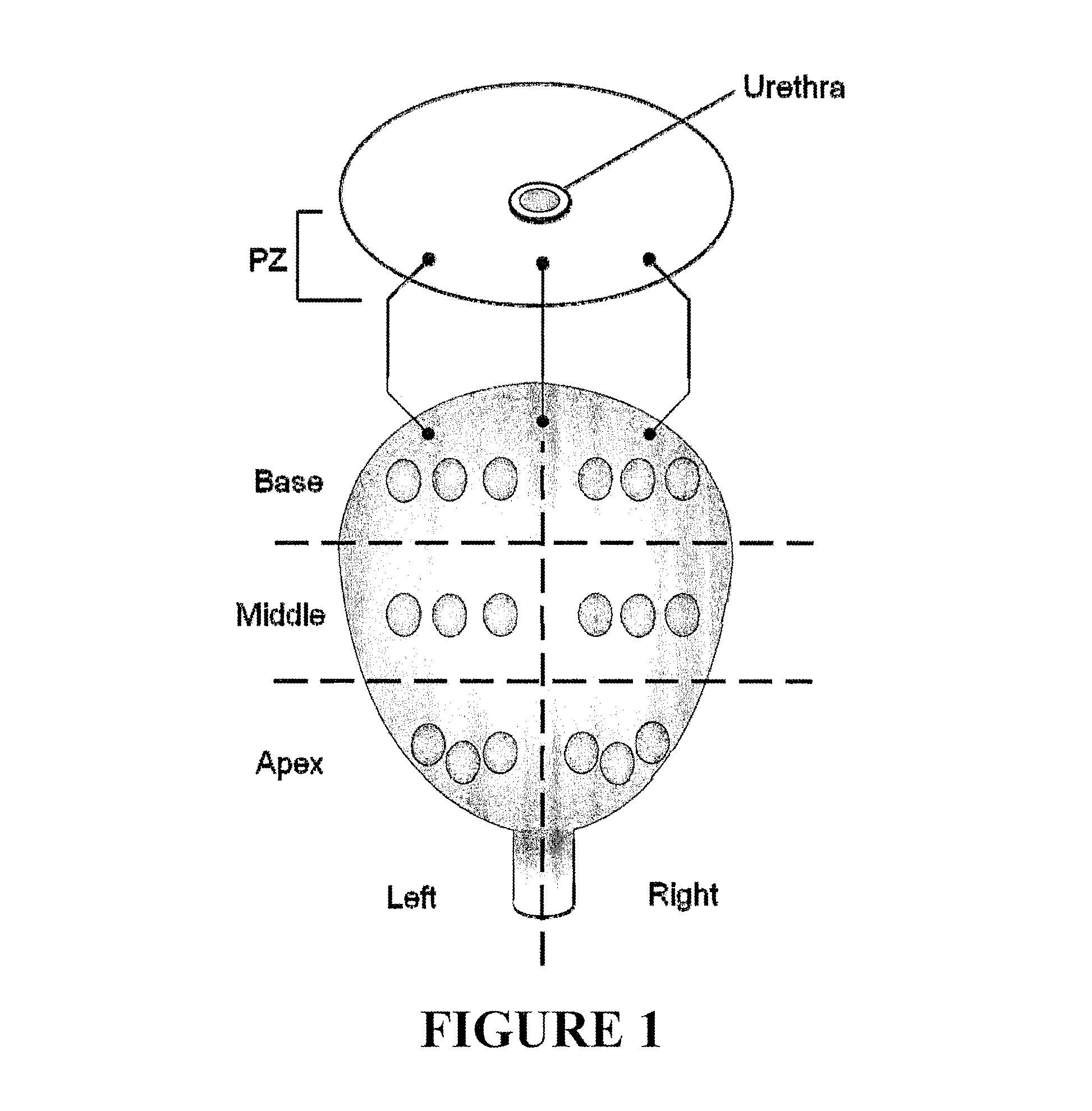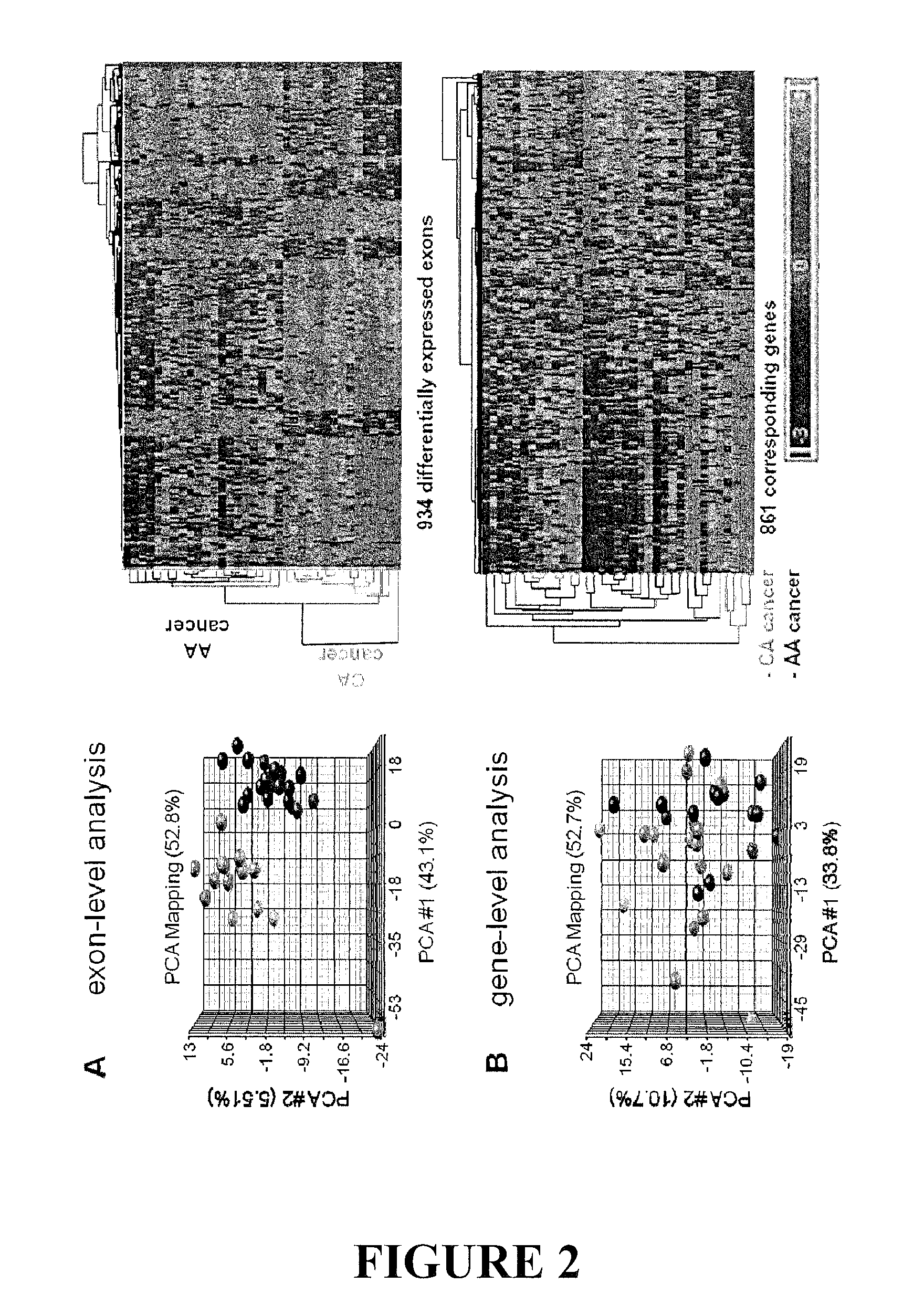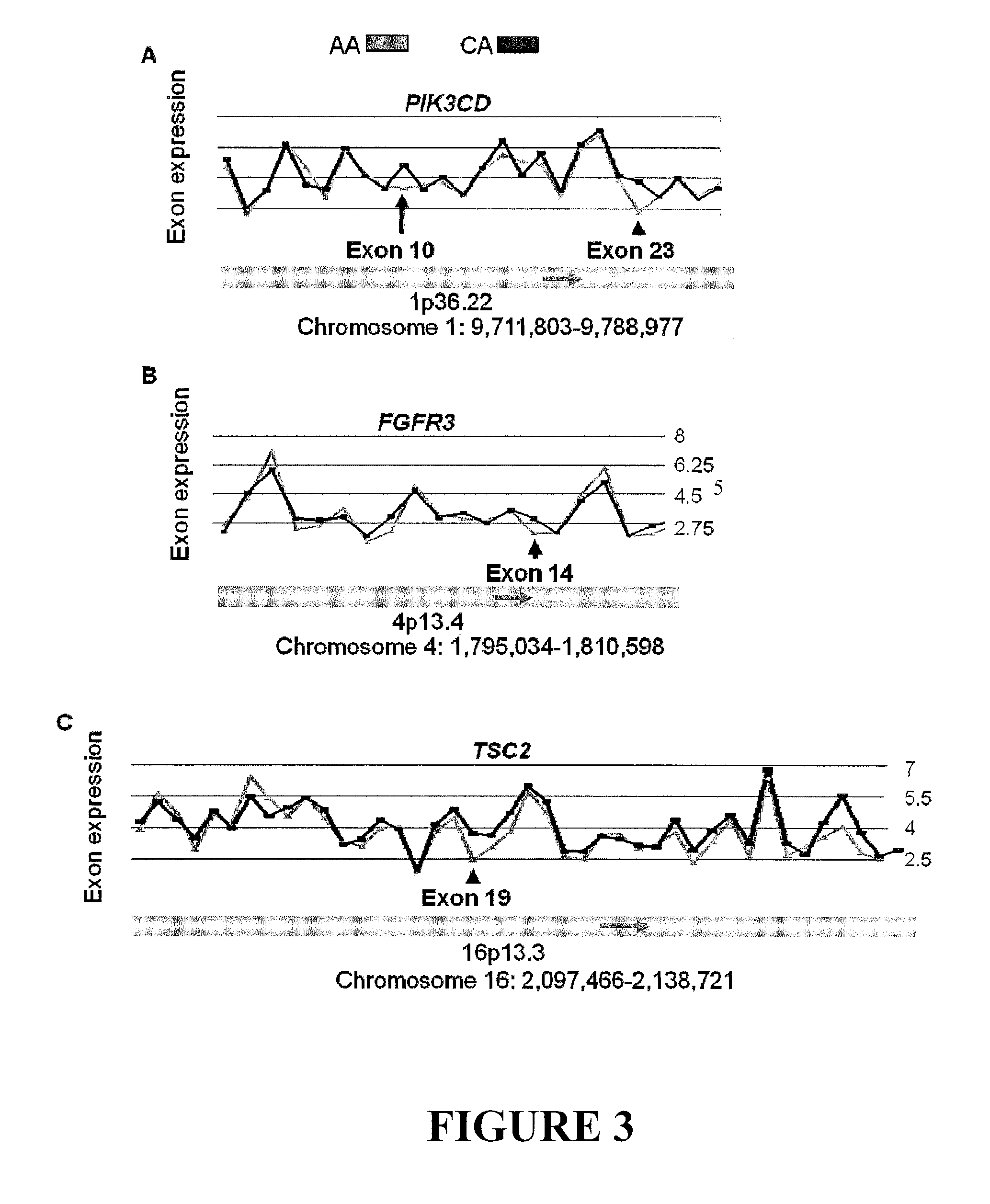Alternative splicing variants of genes associated with prostate cancer risk and survival
a technology of prostate cancer and variants, applied in animal/human proteins, tumor rejection antigen precursors, peptide sources, etc., can solve the problems of marked decrease of increase the short to long variant ratio, increase the cell proliferation and cell migration, and increase the incidence and mortality rate
- Summary
- Abstract
- Description
- Claims
- Application Information
AI Technical Summary
Benefits of technology
Problems solved by technology
Method used
Image
Examples
Embodiment Construction
[0021]Alternative splicing dramatically expands the protein coding repertoire of higher eukaryotes. Current estimates suggest that greater than 60% of all human genes have more than one isoform / splice variant. The expression of specific splice variants is regulated in a developmentally and tissue-specific manner (Black DL: Mechanisms of alternative pre-messenger RNA splicing. Annu Rev Biochem 2003, 72:291-336). Alternatively spliced isoforms from the same gene can produce proteins with drastically different properties. For example, the bcl-x gene utilizes different 5′ splice sites, resulting in proteins that have antagonistic functions. The short form of bcl-x promotes apoptosis, while the long form inhibits cell death (Boise L H, Gonzalez-Garcia M, Postema C E, Ding L, Lindsten T, Turka L A, Mao X, Nunez G, Thompson CB: bcl-x, a bcl-2-related gene that functions as a dominant regulator of apoptotic cell death. Cell 1993, 74:597-608).
Characterization of Clinical Specimens
[0022]Needl...
PUM
| Property | Measurement | Unit |
|---|---|---|
| length | aaaaa | aaaaa |
| hairpin structures | aaaaa | aaaaa |
| width | aaaaa | aaaaa |
Abstract
Description
Claims
Application Information
 Login to View More
Login to View More - R&D
- Intellectual Property
- Life Sciences
- Materials
- Tech Scout
- Unparalleled Data Quality
- Higher Quality Content
- 60% Fewer Hallucinations
Browse by: Latest US Patents, China's latest patents, Technical Efficacy Thesaurus, Application Domain, Technology Topic, Popular Technical Reports.
© 2025 PatSnap. All rights reserved.Legal|Privacy policy|Modern Slavery Act Transparency Statement|Sitemap|About US| Contact US: help@patsnap.com



